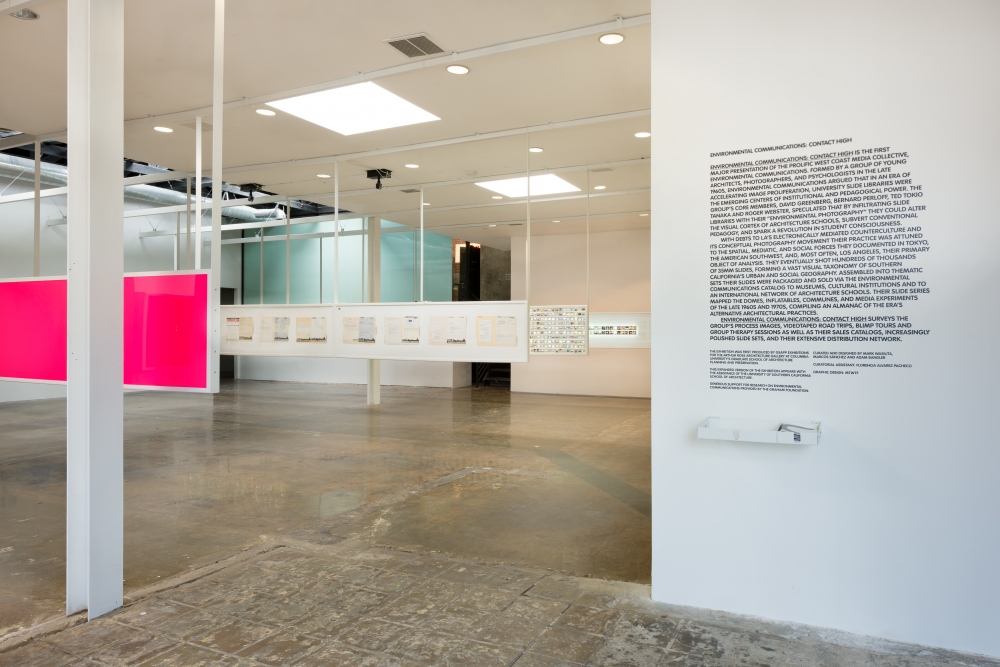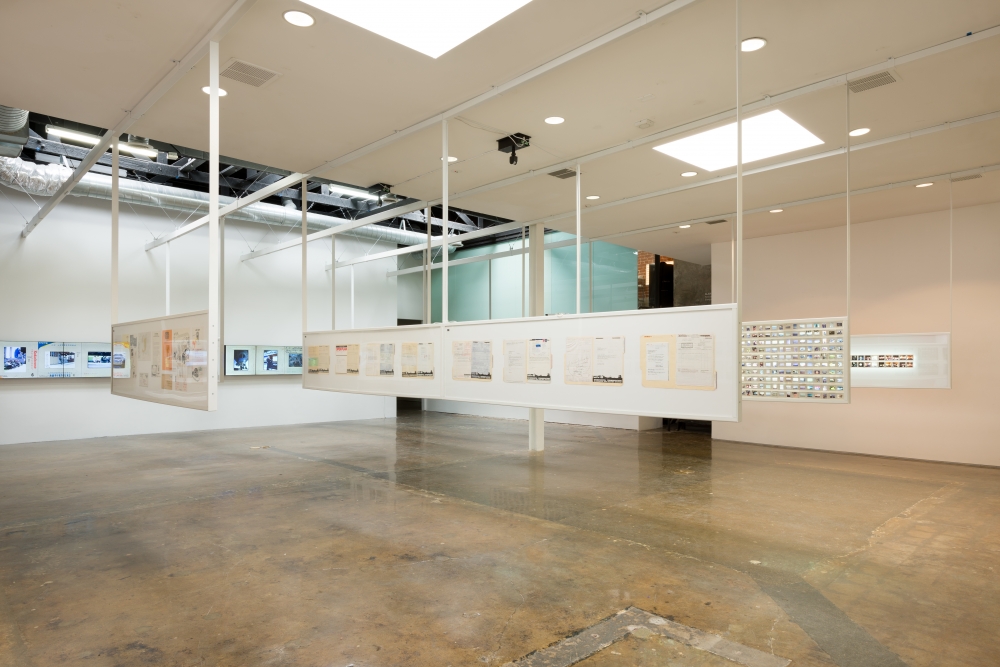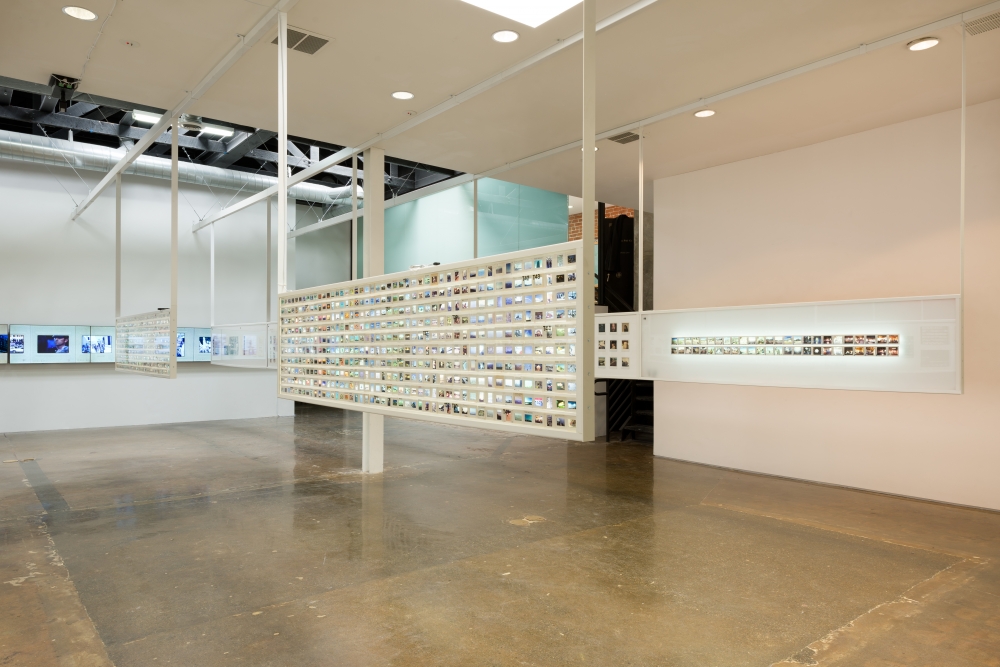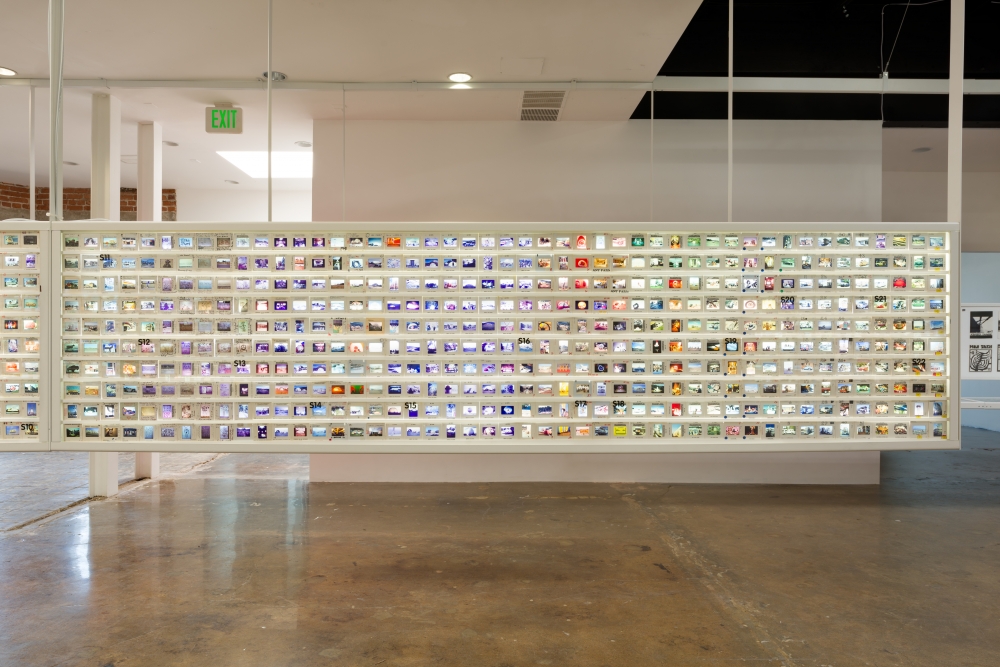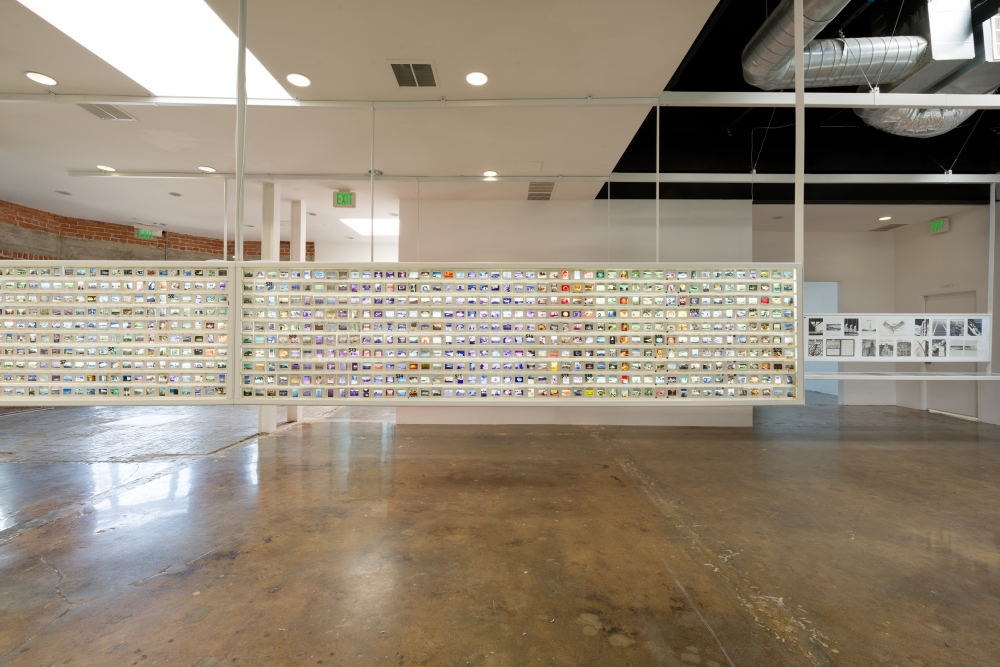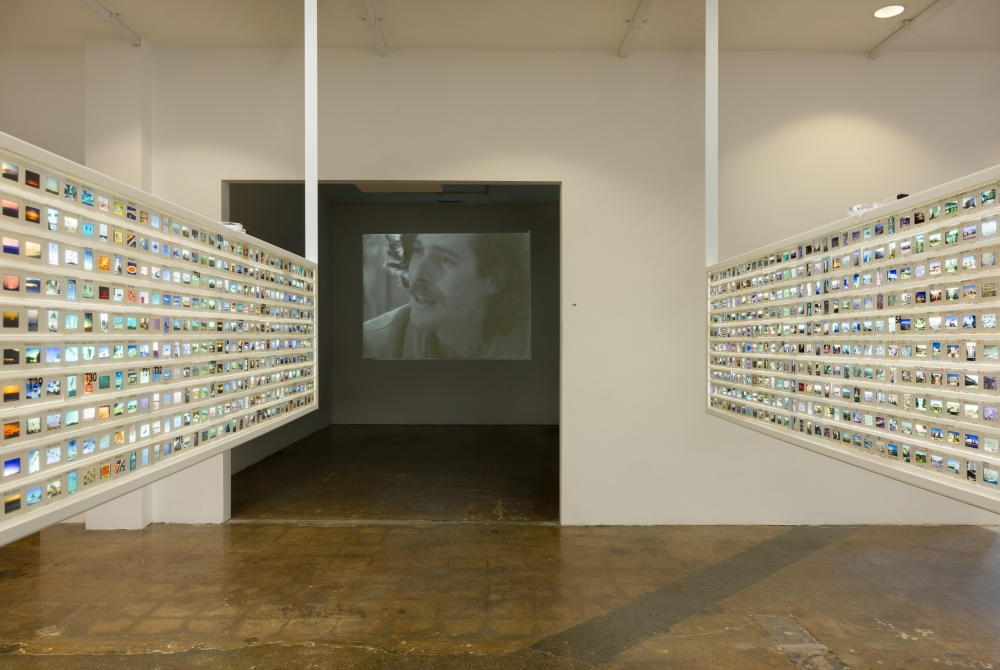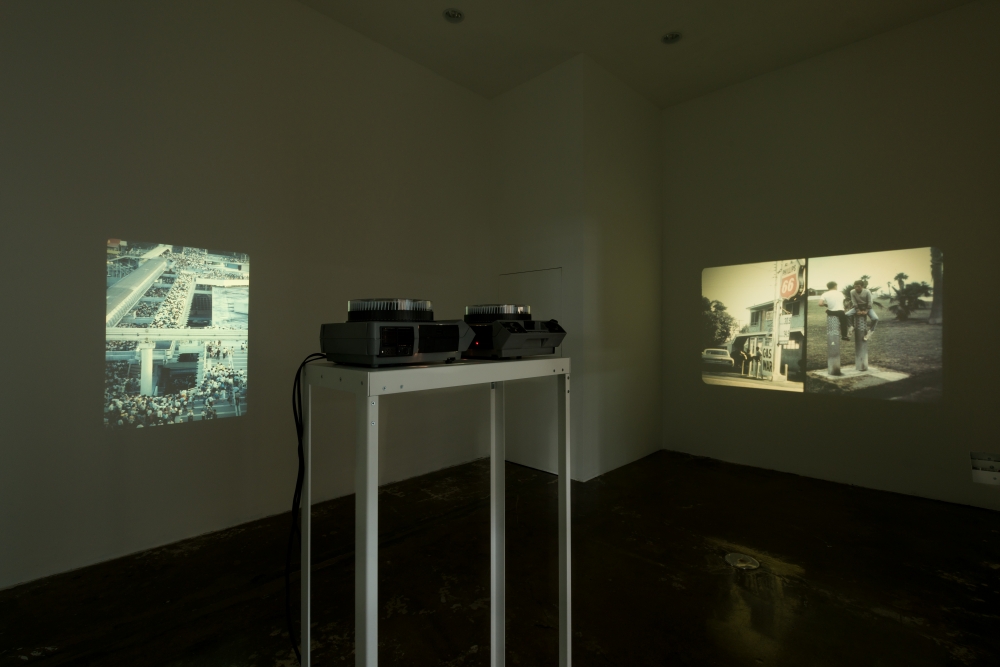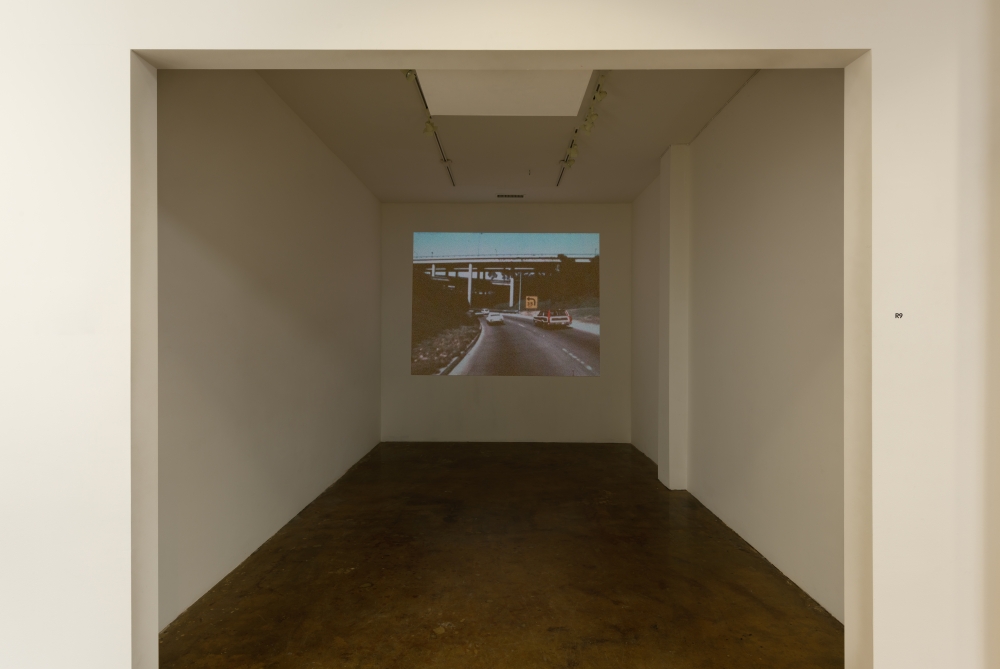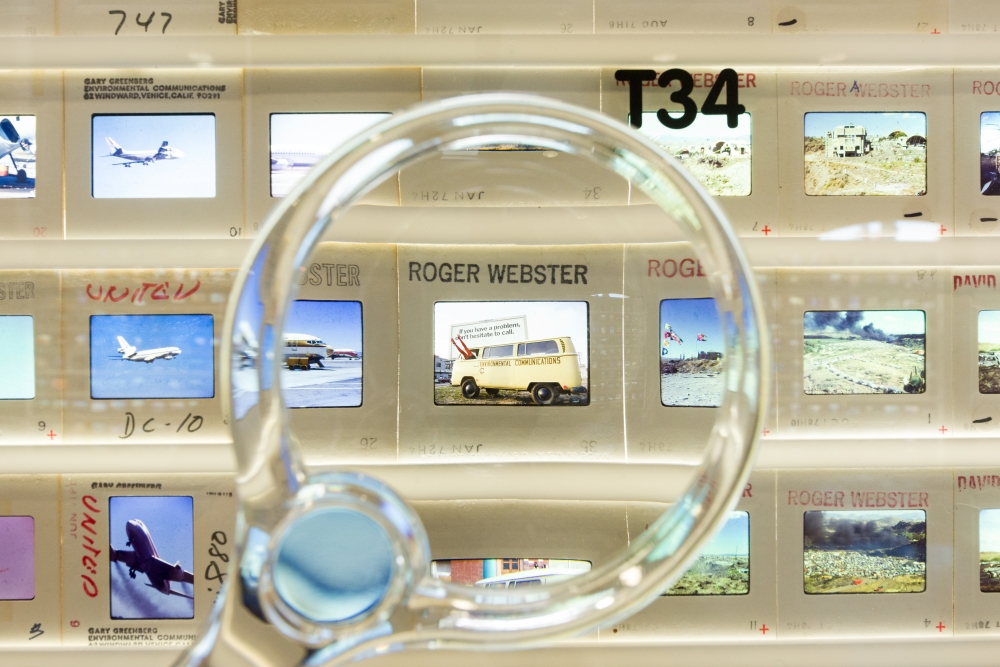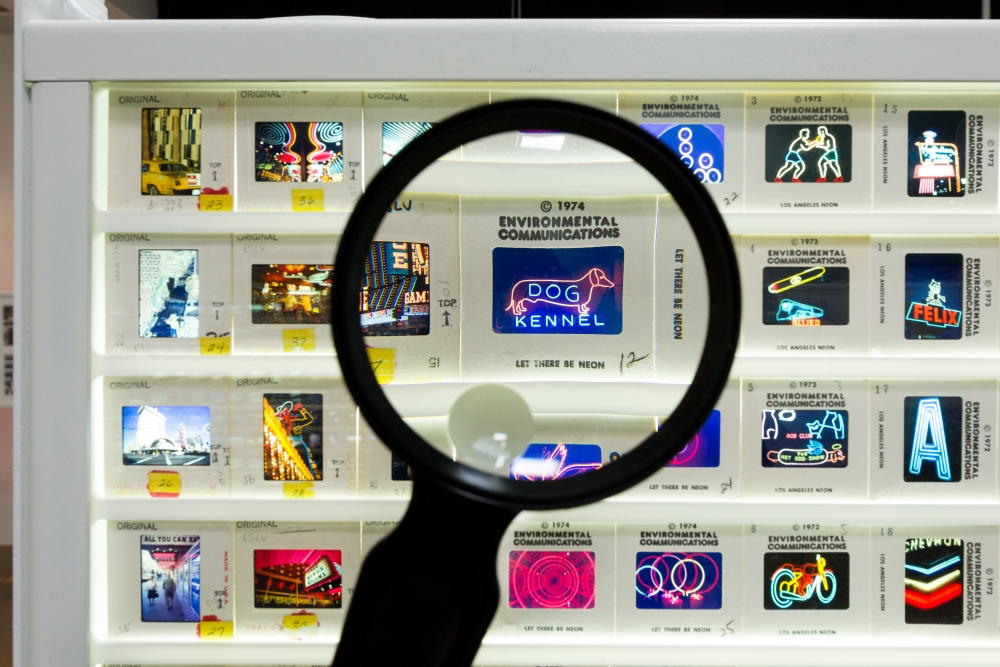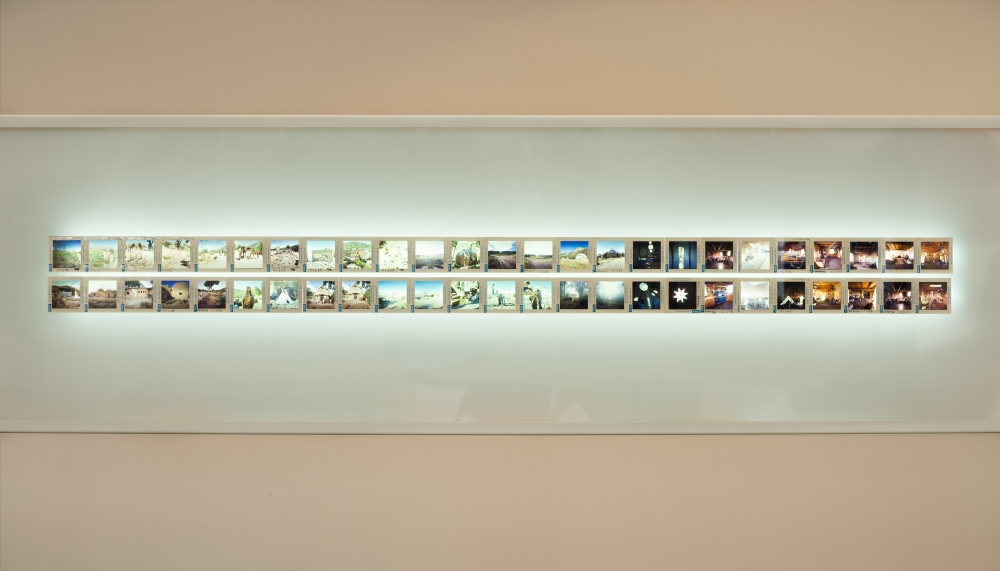Environmental Communications presented major presentation Contact High at Los Angeles’ LAXArt which opened February 18 and ran to April 1, 2017.
Curated by Mark Wasiuta, Marcos Sánchez and Adam Bandler, the exhibition surveys the group’s “process images, videotaped road trips, blimp tours and group therapy sessions”. Environmental Communications was formed in 1960 and includes a large number of photographers, architects and psychologists, with the core members being David Greenberg, Bernard Perloff, Ted Tokio Tanaka and Roger Mona Webster.
Their practice aimed to subvert conventional pedagogy, offering up new ways of altering slide libraries and architecture schools, with a process described as ‘infiltrating’ these spaces to spark revolution in the ‘student consciousness’.

